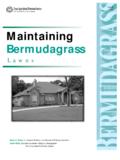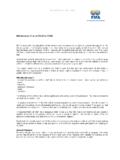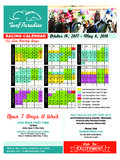Transcription of Turf Surface Guide for Lawn Bowls Clubs - victga.com
1 VICTORIAN GREENKEEPERS ASSOCIATIONTurf Surface Guide for Lawn Bowls Clubs VICTORIAN GREENKEEPERS ASSOCIATIONTurf Surface Guide For Lawn Bowls ClubsVictorian Greenkeepers AssociationPO Box 255 Gisborne Victoria Booklet was written byDyson Appleyard With assistance from Phil Ford (NMIT Lecturer in turf Management)First Edition May 2008 Table of ContentsThe Victorian Greenkeepers 2 Chapter 1 What Are Your 3 Chapter 2 Greens 4 The Highton 5 Chapter 3 Natural Against 7 Chapter 4 Why Choose 9 Which Couch Best Suits My 10 Salt Trials On Warm Season 14 Community Water 15 Company DirectoryPage 17 Foreward The RVBA acknowledges and supports the work of the Victorian Greenkeepers Association. Mr Peter HanlonExecutive OfficerRoyal Victorian Bowls Association" This booklet has been put together by greenkeepers who are interested in passing on to Bowling Clubs information regarding the new grass green technologies available when looking at the replacement of an existing to Dyson Appleyard and Andrew Fitzharris for all their hard work on producing this booklet.
2 Mr Douglas AgnewPresidentVictorian Greenkeepers AssociationThe Victorian Greenkeepers AssociationThe Victorian Greenkeepers Association formally known as the VGBA, was formed in 1911 and its members were Greenkeepers from the few inner suburban Clubs The main reason for the establishment of the association was to provide a forum to discuss the best types of grasses, diseases affecting turf , greens construction and provide a social outlet for greenkeepers. Over recent decades Greenkeeping has evolved, with the biggest change being in the training requirements for turf management. Greenkeepers are required to sign on for a four year Apprenticeship. All aspects of turf management are covered, subjects include Turfgrass Botany, Weed, Pest and Disease Management, Drainage and Greens Construction, Irrigation Installation and Management.
3 At the completion of the apprenticeship, greenkeepers have the option of continuing their studies by enrolling in a Diploma course. This three year course covers subjects studied during the Apprenticeship training but at an advanced level. The level of mathematics and science required at this level would surprise most bowlers. This training provides Greenkeepers with the knowledge to not only cut and roll grass, but also to maintain the health and well being of the green, and be able to implement long term plans for watering and fertilising. Clubs with a greenkeeper trained in this way have a Professional Tradesman looking after the most important item in a Bowling The Greens. Our membership is continually growing and we welcome not only Greenkeepers and Sales Representatives but also Greens Directors and club members interested in learning about the technical side of turf website ( ) is updated regularly with turf related information as well news from around the state.
4 We have also setup a forum for open discussion on turf matters, problems you may be encountering or just to keep in touch with the greenkeepers spread across the state. What Are Your Options Deciding which direction to your Bowling Club have Natural Grass Green/s? Prior to the current drought conditions were they healthy?Are your members questioning the committee, in regardsto the Green/s surfaces at your club?As a committee are you aware of all your options regardingreplacement of your Green/sMany Clubs during the planning stage automatically think that a SYNTHETIC Surface is the only answer however this is NOT NECCESARILY TRUE as your other option is Couch are two main construction methods open to your club when installing a Couch green:- 1. A New Top. 2. Reconstruction of the Green. Research carried out over the past few years at Northern Melbourne Institute of TAFE in conjunction with the Victorian Greenkeepers Association has shown, that by using Couch Grass and new techniques in constructing bowling greens, not only will there be a reduction in water use, but also provide a Surface that will survive the harsh summer booklet has been produced to inform you of the options available and ensure your members are happy with a Natural Grass Surface .
5 It will provide your Greenkeeper with information regarding the management and survival of your greens with consideration for the demands of our summer weather and the bowling commitments of the club. At the same improving the quality of your greens, saving water and most importantly money for your ConstructionModern bowling greens require excellent drainage so that minimal time is lost during wet weather. Only sand will provide the required drainage, but not just any sand. turf scientists have developed a number of laboratory tests and strict specifications to ensure that construction sand provides the required drainage rate, but also the compaction required for a fast, true running Surface and the ability to hold sufficient nutrients and water to grow healthy grass. A new bowling green construction will cost in the area of $40,000 to $50,000 in materials alone, up to half of that cost can be for sand.
6 An investment of a few hundred dollars in sand selection makes sense, as it is the most important factor for the success of your new green. Research into Modern greens construction, funded by the Victorian Greenkeepers Association has resulted in simple processes with reduced costs This research highlighted innovations such as a flat sub-base with pipes laid directly on the sub-base (ie: no trenches) thus reducing the time and quantity of materials required, producing a high quality green at less costto the the summer of 2006 / 2007, one green at Highton Bowling Club was built using this then Mt Eliza Bowling Club have used the same Highton ProjectWith the drought affecting most bowling Clubs across the state of Victoria over the last few seasons, Highton Bowling Club in Geelong decided in 2006 they were going to embark on a project to ensure they would be able to keep their grass greens not only running well, but alive and healthy.
7 The Club Chairman Alan Mathers, Head Greenkeeper Dave Gudgeon and NMIT Lecturer Phil Ford pooled their resources and expertise to come up with a solution. NMIT had recently conducted trials comparing two different green construction types and used a variety of warm season grasses (couch grass) to determine which one performed better and on what Highton Club was successful in its application for a $50,000 community Water Grant, to help fund the project. Highton decided to go with the California Method of construction which has a level base unlike conventional Bowling Green bases which generally have a rooftop formation to help the water flow into the drains. The club also purchased a 154,000ltr Water tank to store the water collected from the clubhouse roof and the the California Base being flat, Megaflow drains are used.
8 These are flat and sit on top of the base as can be seen in the above picture. They have a fabric cloth sleeve to protect the drains from the infiltration of fine particles of sand. Highton then decided to Sub irrigate (water from underneath.) This method of irrigation allows the water to be applied directly to the rootzone, which in turn promotes a deeper root system, which is required for healthy greens. The original green was excavated to a depth of 300mm to the existing base and a plastic membrane laid across the Surface . The Megaflow drains (300mm x 50mm Deep Rectangular) were laid across the plastic membrane at increments. Ventilation was added as air needs to escape from the pipes when being filled with water. Gravel was placed over the drains to a depth of 80mm, followed by 220mm of rootzone sand that contained 15% peat green was laser levelled and the Tifdwarf sprigs spread across the entire green.
9 A light top dressing followed to cover the springs to hold the sprigs in place on the Surface . Regular watering was carried out to enable the grass to strike. Hand weeding was carried out to eliminate the need for Herbicides that could stunt the growth of the 3 months the grass cover was almost 100%, with the root system already at the bottom of the sand cost of the project was around $80,000, compared to the cost of synthetic surfaces which generally average around $120,000 - $160, one year after completion of the project the green is reported to be performing very well. This may well be the preferred method of future greens Green being top dressedover the couch sprigsAlan Mathers & Dave Gudgeonshow the root depth of the greenNatural turf Vs SyntheticMany Clubs when investigating available options for replacement greens incorrectly think that synthetic greens equates to NO MAINTENANCE.
10 They view this as a cheaper option compared to paying a greenkeeper and the costs associated with a grass green. At present most synthetic surfaces need to be watered, sprayed for algae, weeds and brushed or vacuumed to keep the Surface in a good playing condition. This requires new equipment and personnel to carry out the required maintenance. Synthetics are more difficult and costly to repair when damaged by vandals, storms or earth movement. When looking at the prospect of replacing your existing Surface , you must ask yourself, What do our Members Prefer? Below are some key issues from a study conducted in 2004 comparing Natural Surfaces against Synthetic Preferences for SurfacesThe survey of 300 Victorian lawn bowlers found that: 99% of respondents surveyed regularly play on turf greens. 34% of respondents play on multiple green types.




